A thousand kilometers through Laos in only two weeks
Along the Mekong river
📌 By Jakub Mikula | February 01, 2020
- month of travel: February
In early 2020, my friend John and I embarked on a journey to Laos. Me, as a first-time visitor, I was captivated by the country’s natural splendor. Despite our tight two-week itinerary, which included long overnight rides and hour-long drives, we were continually struck by the breathtaking landscapes and unspoiled beauty of the riversides. Our journey began in the charming city of Luang Prabang and continued down the Mekong River, where we eventually crossed into Cambodia.
Below, I have outlined the itinerary of our 12-day trip that began in Luang Prabang, Laos, and concluded in Phnom Penh, Cambodia. Despite the fast-paced nature of this trip, I hope this post can serve you as a helpful guide in planning your own itinerary.
(day 1)
Luang Prabang
Upon arriving at the Luang Prabang International Airport, the first step was to navigate through immigration and secure a visa on arrival. The process was relatively straightforward, with the requirement of a passport-sized photo and payment of a fee based on one’s nationality. The visa acquisition process was a quick one, though it did involve waiting in a queue.
As our hotel was conveniently located close to the airport and our luggage was manageable, we decided to take a walk and explore the picturesque village. This also allowed us the opportunity to dine at a quaint, reasonably-priced restaurant away from the overpriced options at the airport terminal.
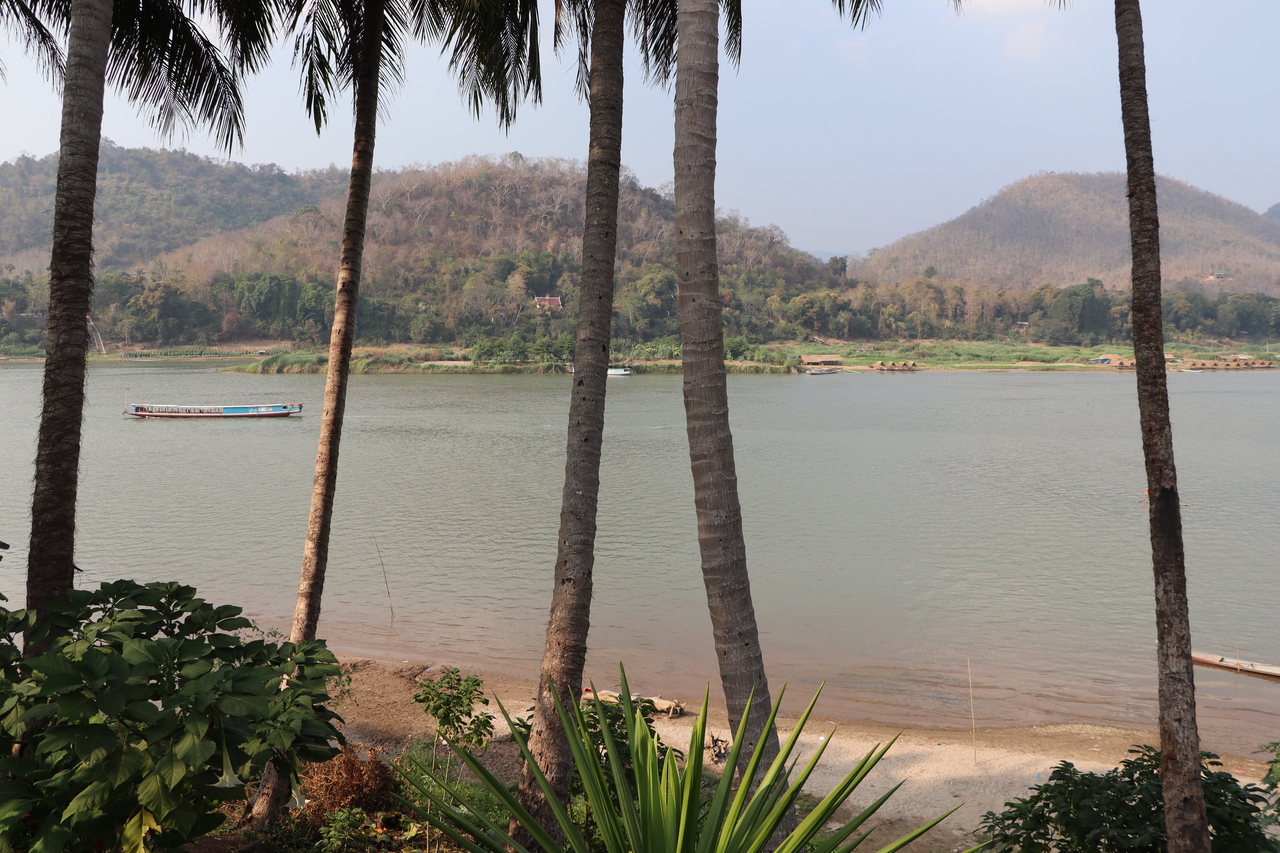
The city of Luang Prabang is situated at the confluence of the Nam Khan River and the Mekong River, both of which are lined with houses, hostels, and a variety of restaurants. The rivers are traversed by many hand-crafted bridges. On our first day, we didn’t have any specific plans other than taking a leisurely stroll along the rivers and soaking in the sights and sounds of the city.
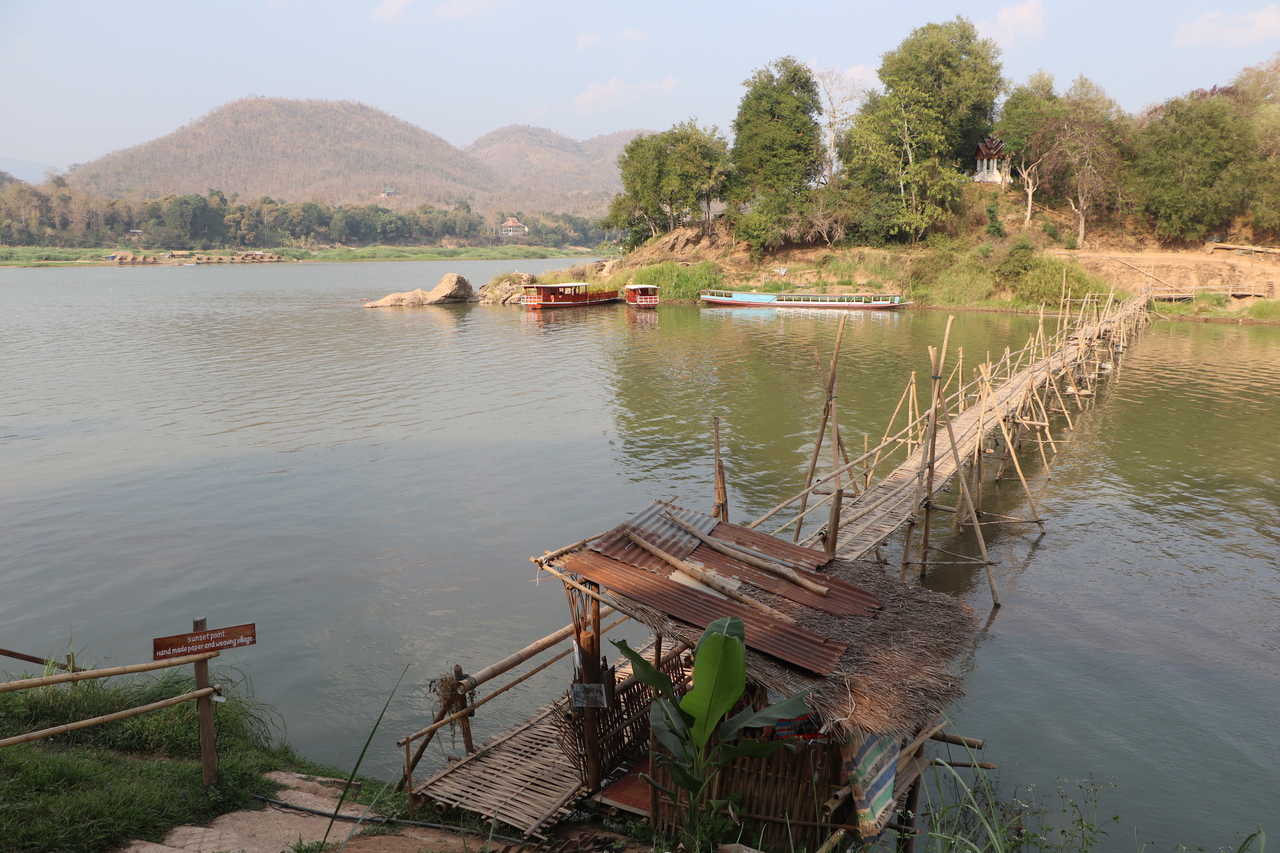
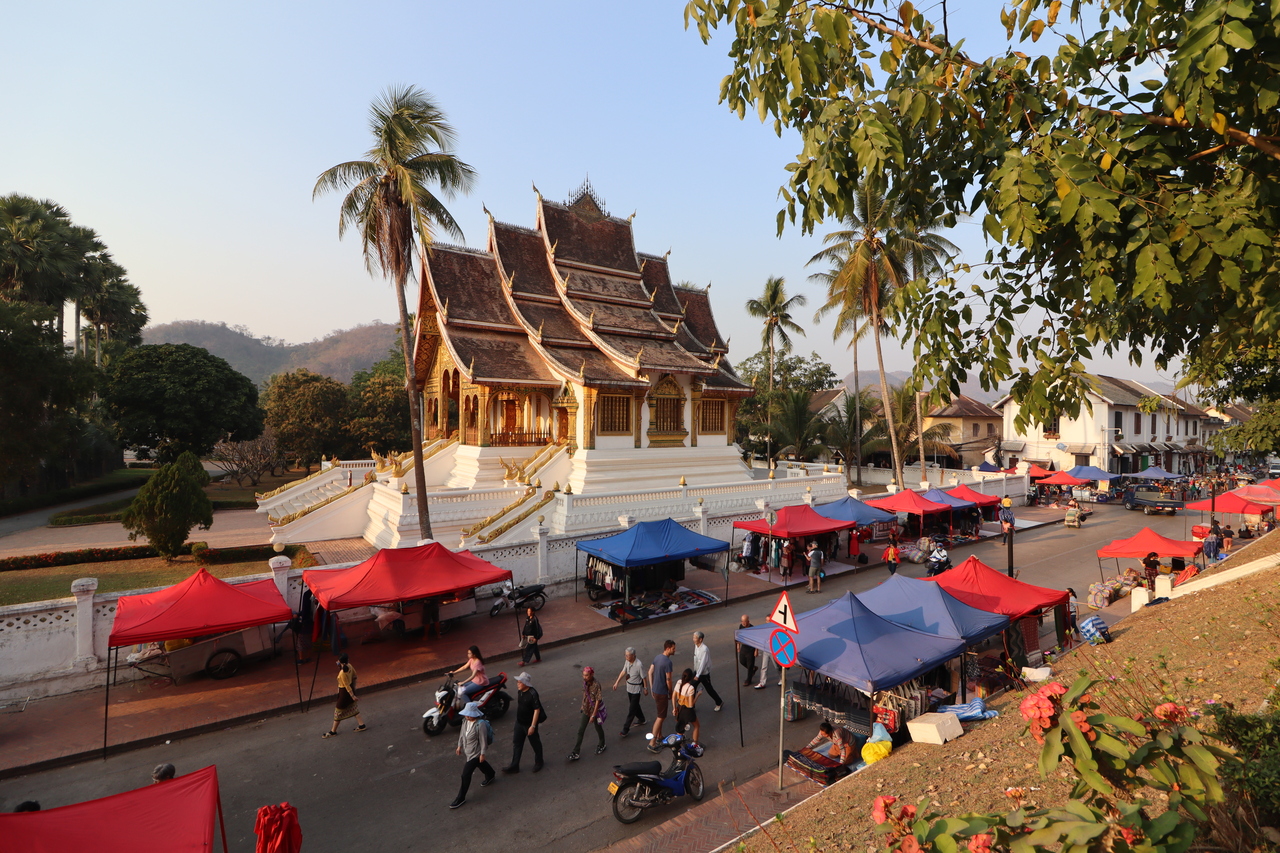
For the evening, we had planned to catch a glimpse of the sunset and explore the night market. One of the best spots to catch the sunset is from the summit of Phousi Hill. Although the hill can get quite crowded with tourists, a little bit of effort can take you to the less-crowded edges, where you can enjoy an unobstructed panoramic view. As we reached the summit, the hill revealed a picturesque view of the Mekong river flowing through a mountainous ridge, bathed in the orange hues of the setting sun. It was a truly breathtaking sight.
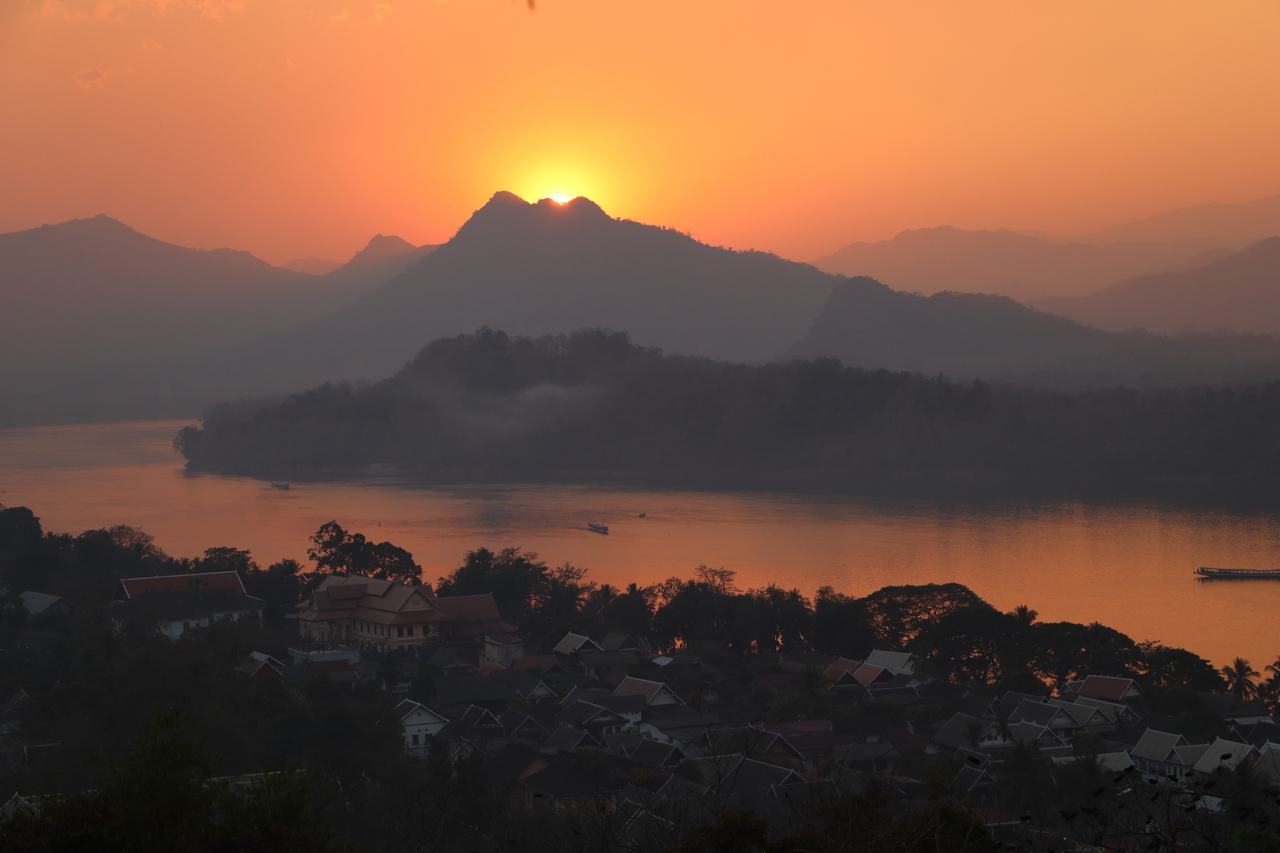
At night, the city comes alive with vibrant markets and souvenir shops, where one can indulge in a plateful of local produce and mingle with fellow travelers and friendly locals.

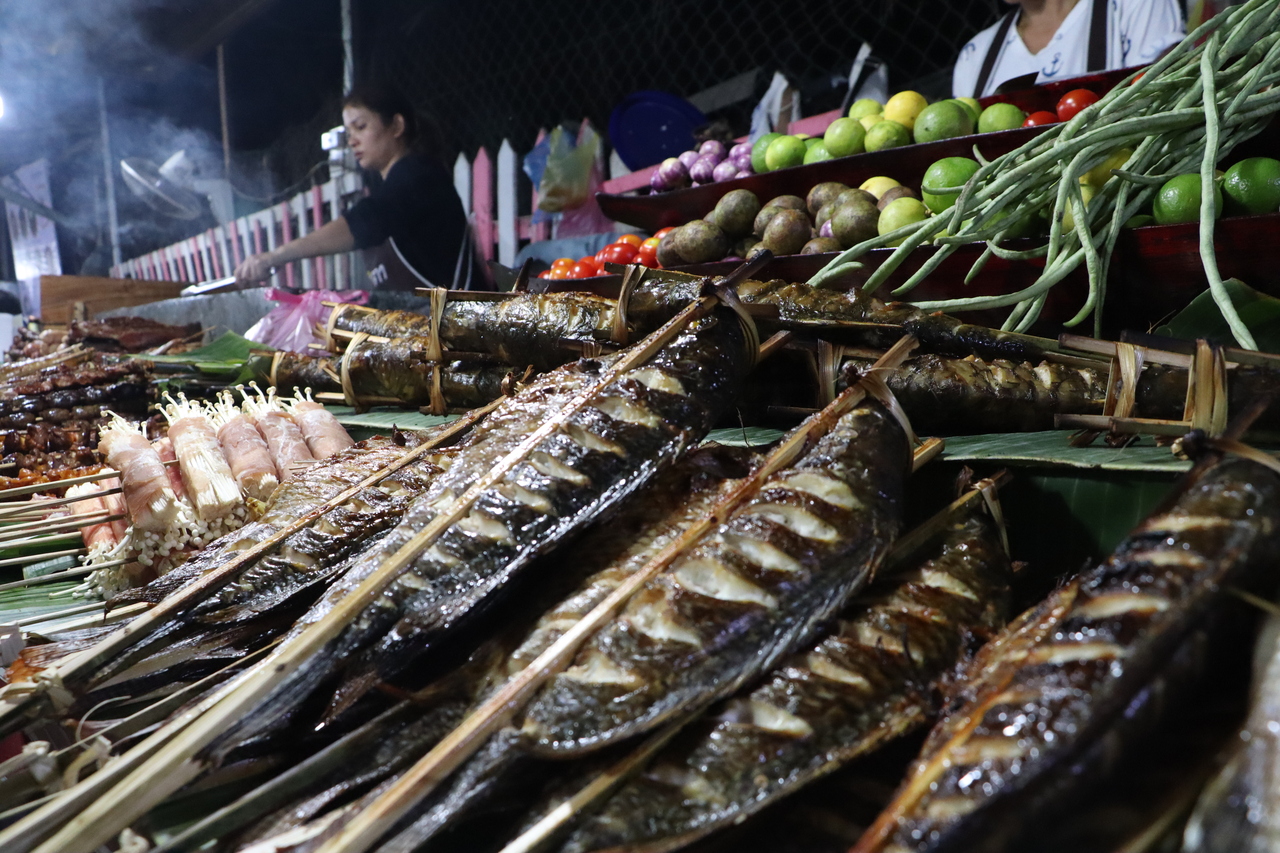
(day 2)
Upon waking up the next morning, the weather was a bit chilly. After a satisfying breakfast near the Mekong River, we set off on a longer walk along the river, before returning to our hostel.
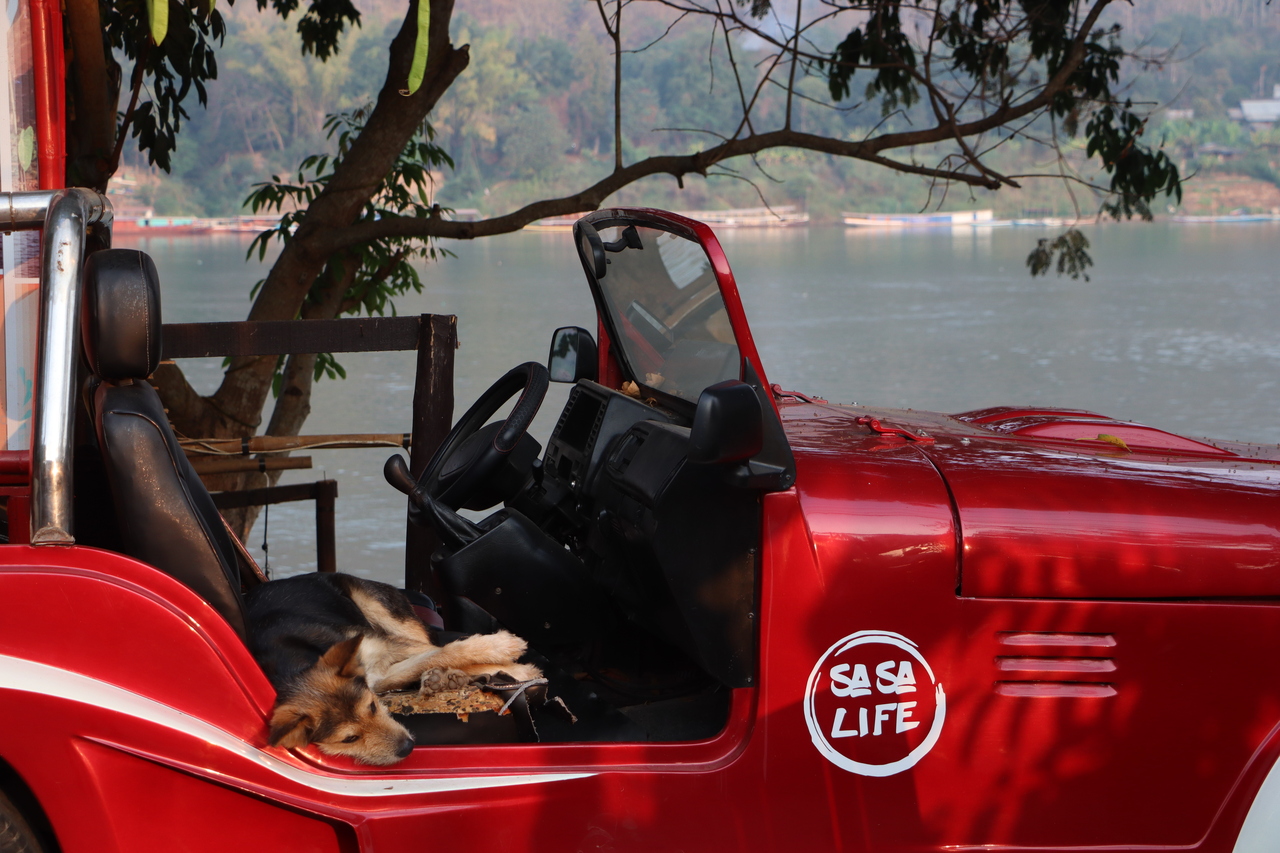
Eager to visit the popular Kuang Si Waterfalls, we then rented a scooter and set off southward.
Kuang Si waterfalls
Renting a scooter is the best way to reach the waterfalls, in my opinion. For larger groups, the option of hiring a van with a private driver is also available. However, having your own scooter allows for greater freedom to explore the surrounding area and make impromptu stops along the way.
As we arrived at the carpark and paid the small fee, it only took us a few minutes of walking through the national park to reach the river.

The park is renowned for its spectacular cascading waterfalls that tower into the heart of the jungle. The natural formations are perfect for swimming, capturing beautiful photos, and taking in the mystical beauty of the verdant forest.
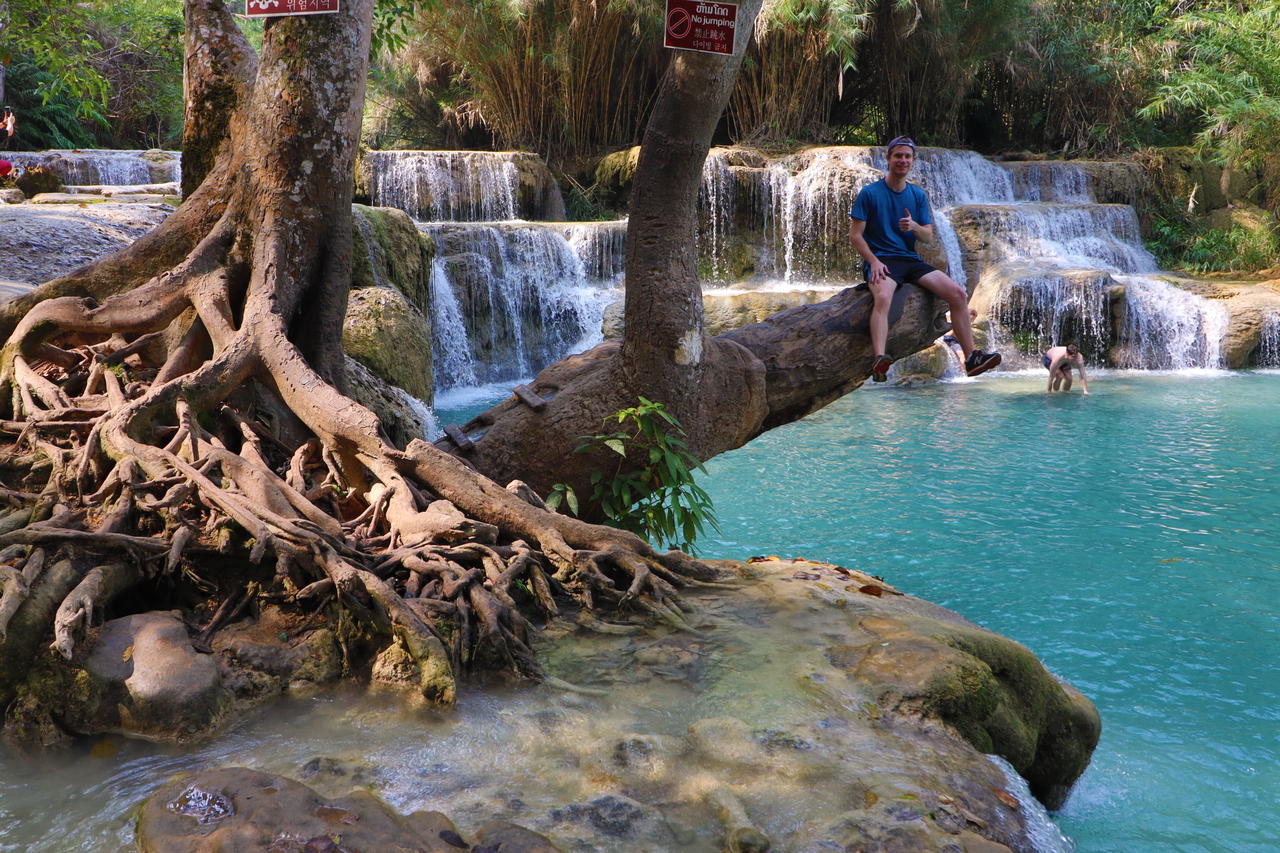
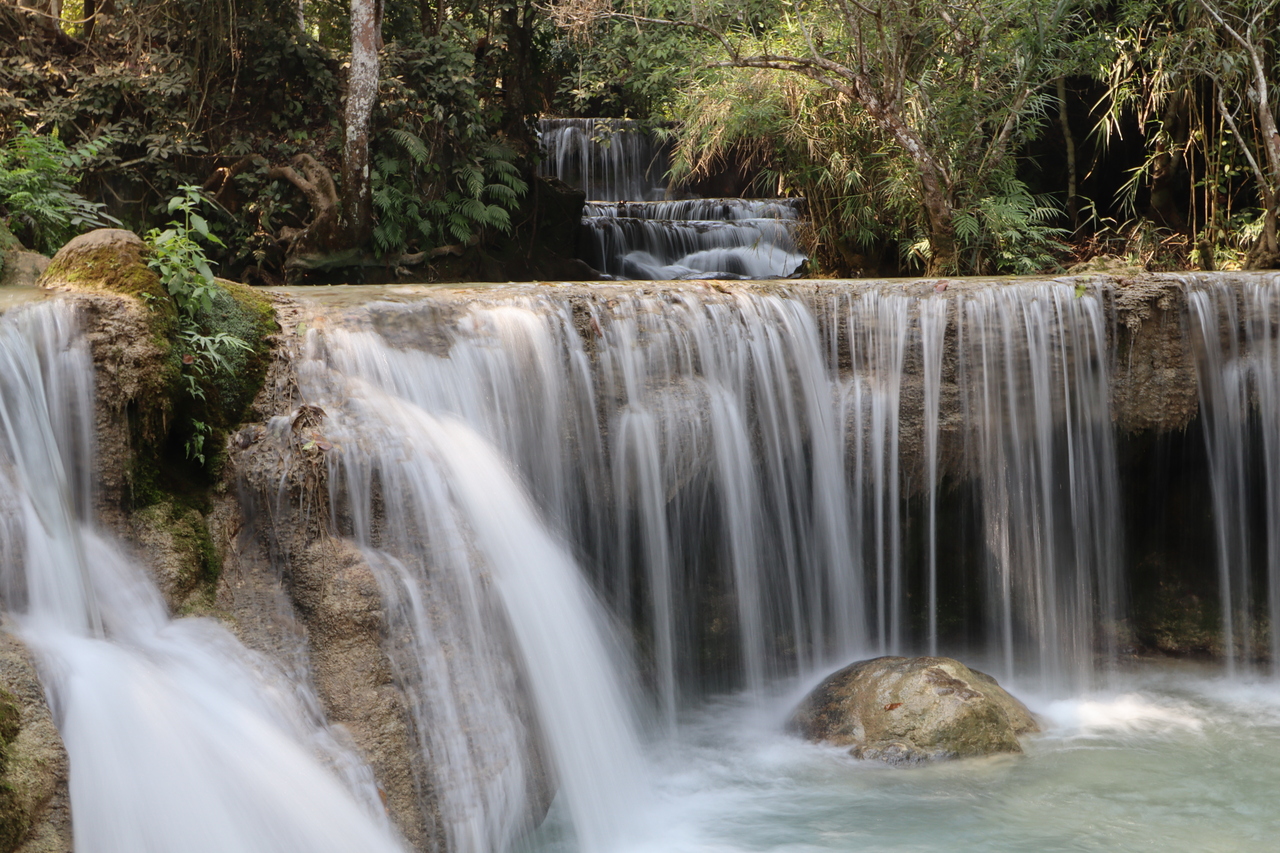
(day 3)
On the winding roads
For our third day, we had planned to visit the city of Phonsavan. The city is best known for the Plain of Jars – a site that contains thousands of large stone jars that are believed to date back to the Iron Age. The cheapest option to travel there from Luang Prabang is by local bus or minivan, however, the 260km journey takes around 6 hours and can be quite exhausting. After a cramped and bumpy ride through an otherwise magnificent mountain range, we finally arrived; (with some of our fellow passengers considering taking a flight for the return trip).
Upon arrival, we immediately booked a tour with our hotel for the following day to visit the Plain of Jars. With the evening free, we decided to explore the small, quiet city. We also had the opportunity to exchange our American dollars, but only the bills that were in perfect and undamaged condition. Of the many ATMs, only one was operational.

As we wandered through the city, we were drawn to the sights and sounds that eventually led us to the night market. The evening was chilly and I was grateful for my warm sweater. The atmosphere at the night market was lively, with plenty of BBQ, hot drinks, and traditional Laotian music.
(day 4)
Plains of Jars
On our informative tour, accompanied by a local guide, we ventured down the dusty roads that led us to a village where old aluminum bomb shells were repurposed into souvenirs. Afterward, we arrived at the Plain of Jars.
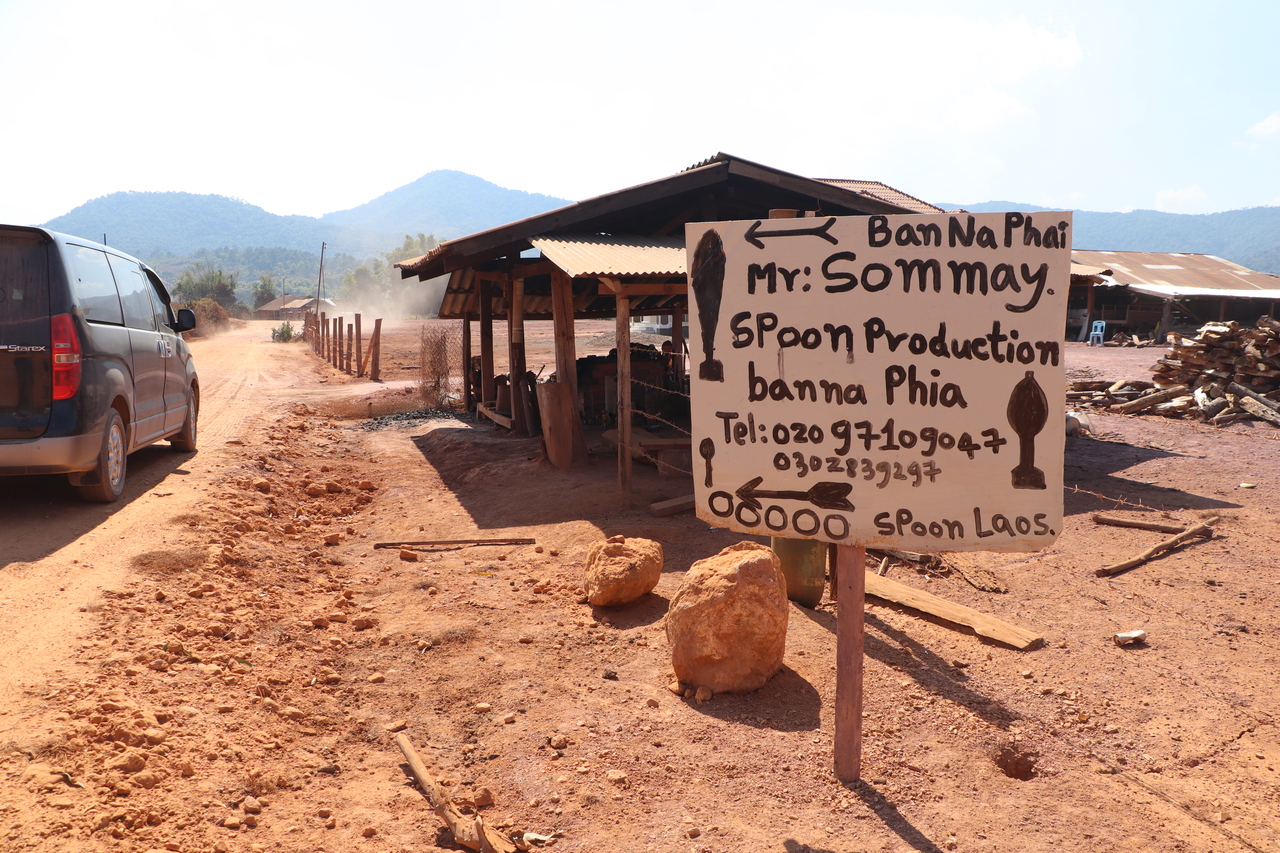
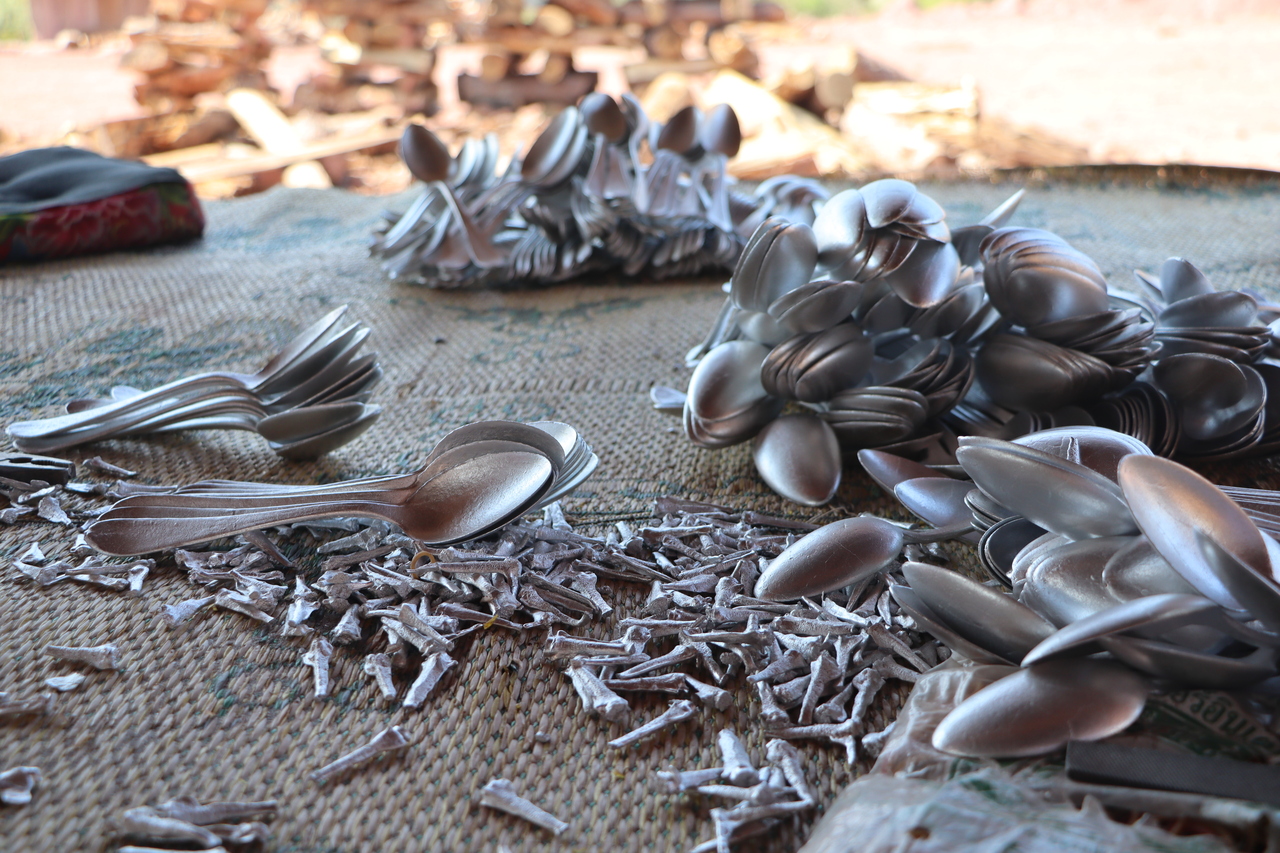
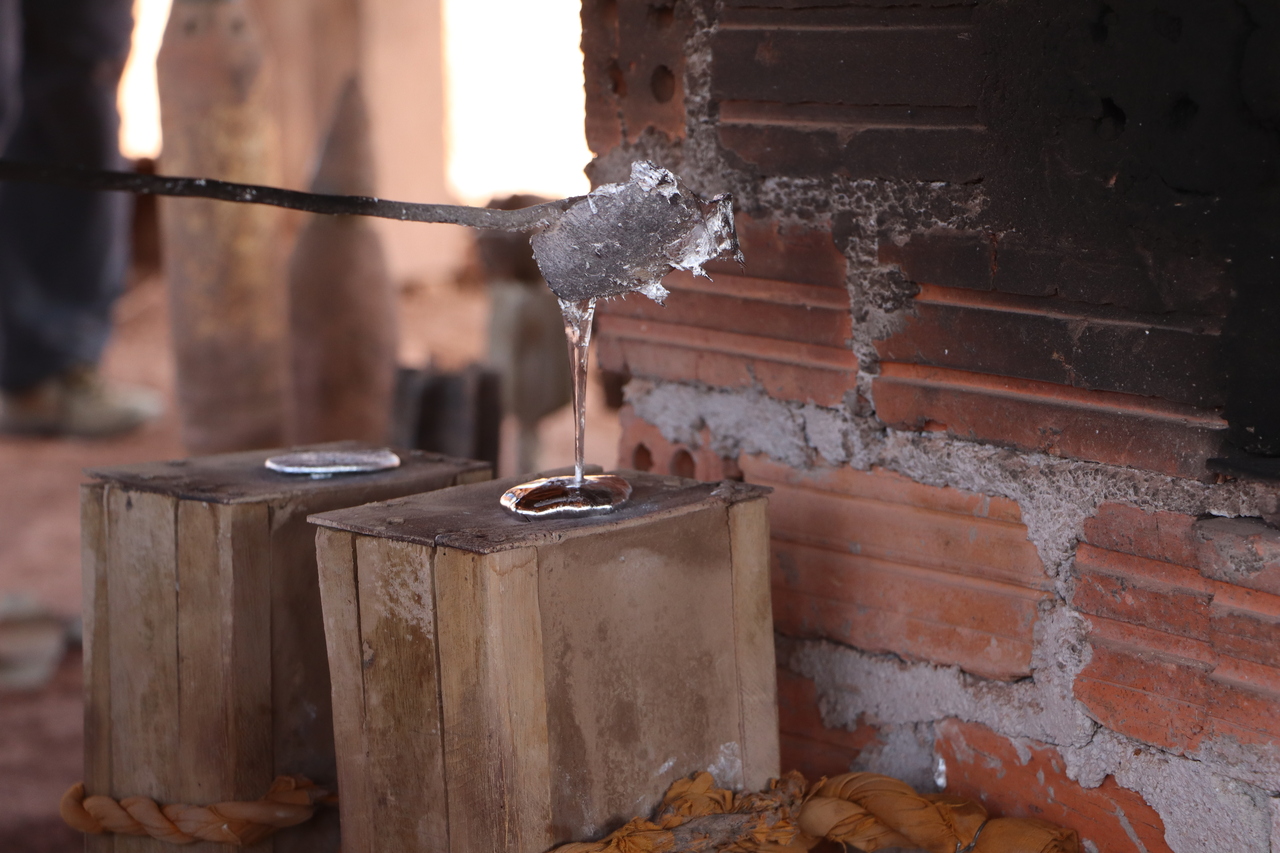
The site was covered with massive, seemingly ancient jars carved from rock - impressive man-made objects that still hold inconclusive knowledge about how they were created.
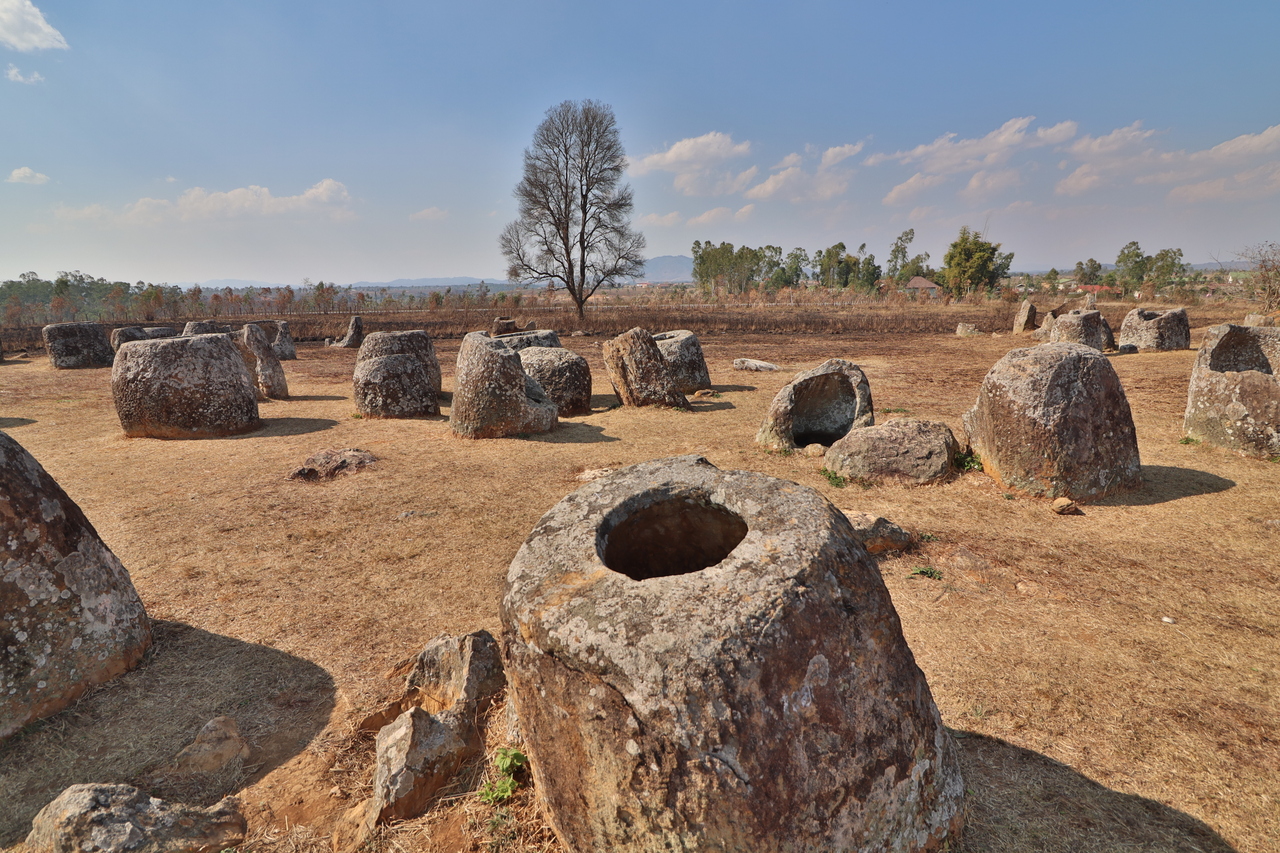
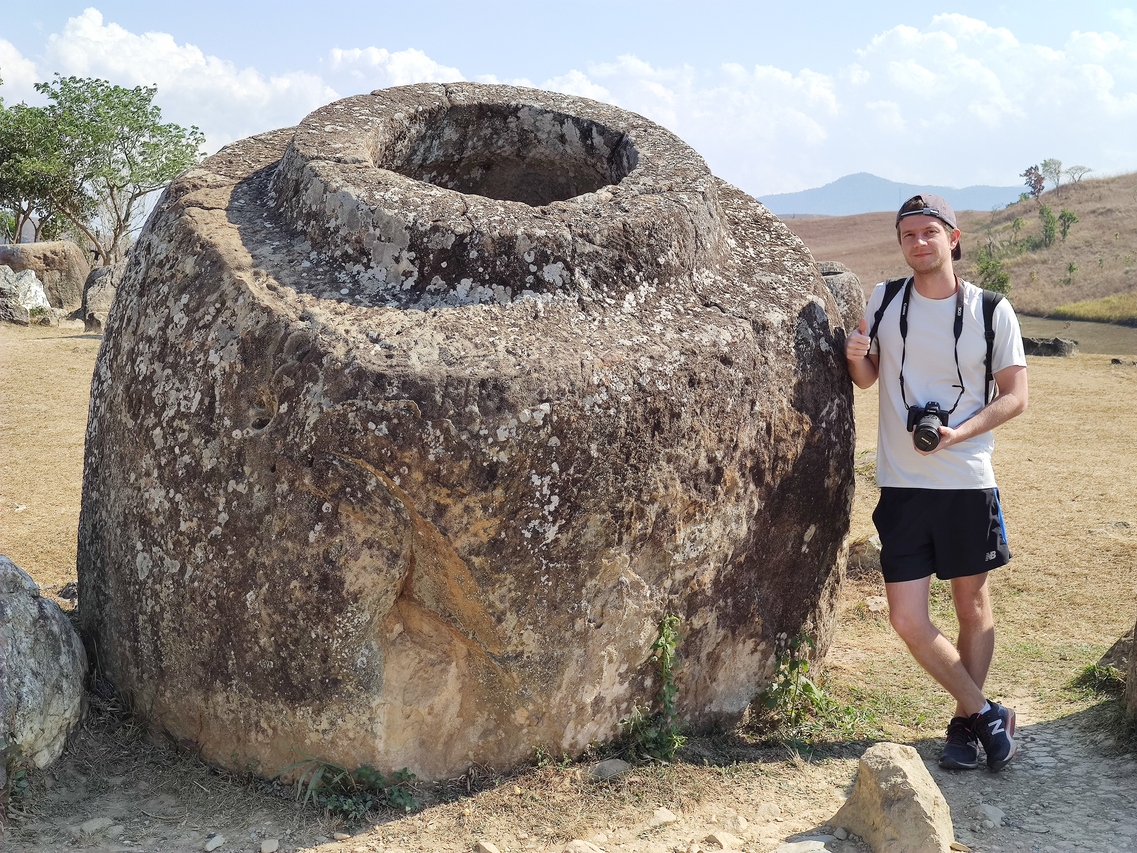
The Plain of Jars site is also famous for bomb craters – the result of heavy bombing that took place during the Vietnam War. Some of the craters were massive and the whole landscape looked more like the surface of the Moon than of Earth.
(day 5)
Vang Vieng
The manager of our hostel was kind enough to drive us to the local bus terminal in Phonsavan, where we boarded an early morning bus headed for Vang Vieng. There, we stayed in a hostel and shared a dormitory room. This idyllic riverside town is home to an array of exciting water sports activities, such as kayaking and tube rides. Other popular leisure activities include hot air balloon rides and visiting nearby caves.
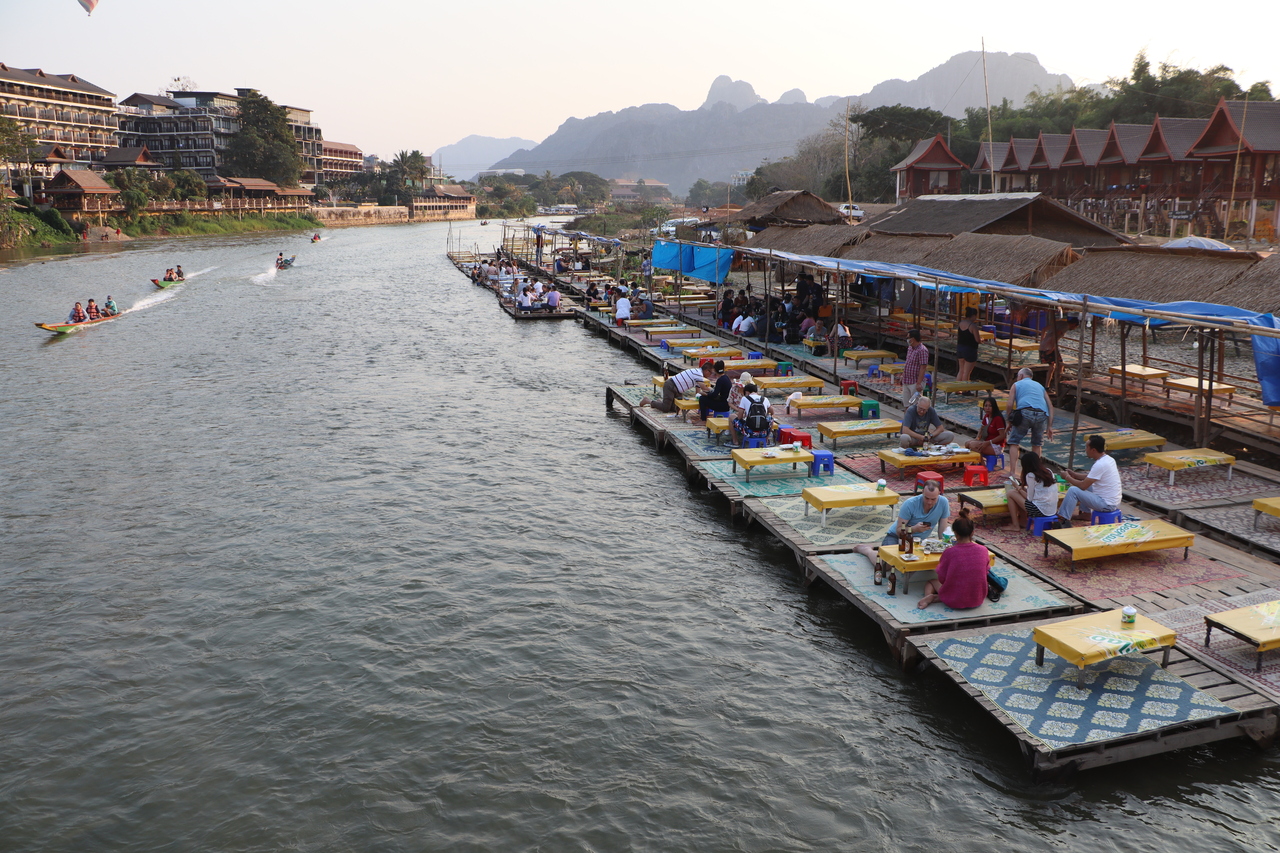
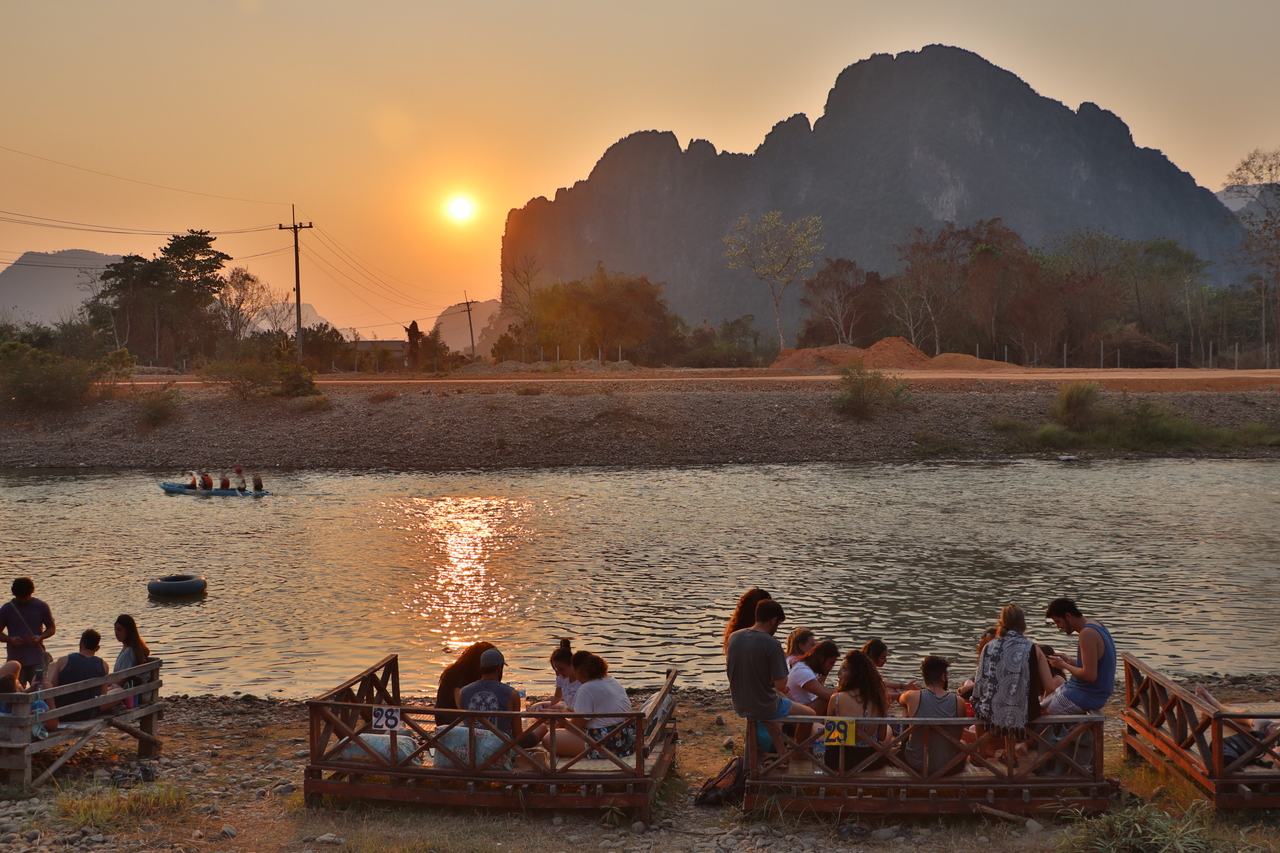
One of the highlights of the city is its riverside eatery - a floating platform where patrons can relax with cold drinks and fresh food while taking in the breathtaking sunset. Unfortunately, we only had one day to spend here and the following day, we set off again with a bus ride to Vientiane, the capital of Laos, and then took a night bus to Pakse.
(day 6, 7)
Along the Mekong river (to Pakse)
The night bus ride is definitely an experience in itself. The upper level of the bus is equipped with large beds, each accommodating up to two people. With the bus fully booked, we found ourselves sleeping next to a stranger and the beds were just long enough; but for taller people, it might have been difficult to stretch out fully. Despite this, I had a surprisingly comfortable sleep and was awakened only when we reached Pakse at 5am.
Here, there was nothing more exciting for us than renting a scooter and exploring the surrounding area. On that day, we visited Paksong and in the late afternoon, we took a longer ride to the ancient temple of Vat Phou.
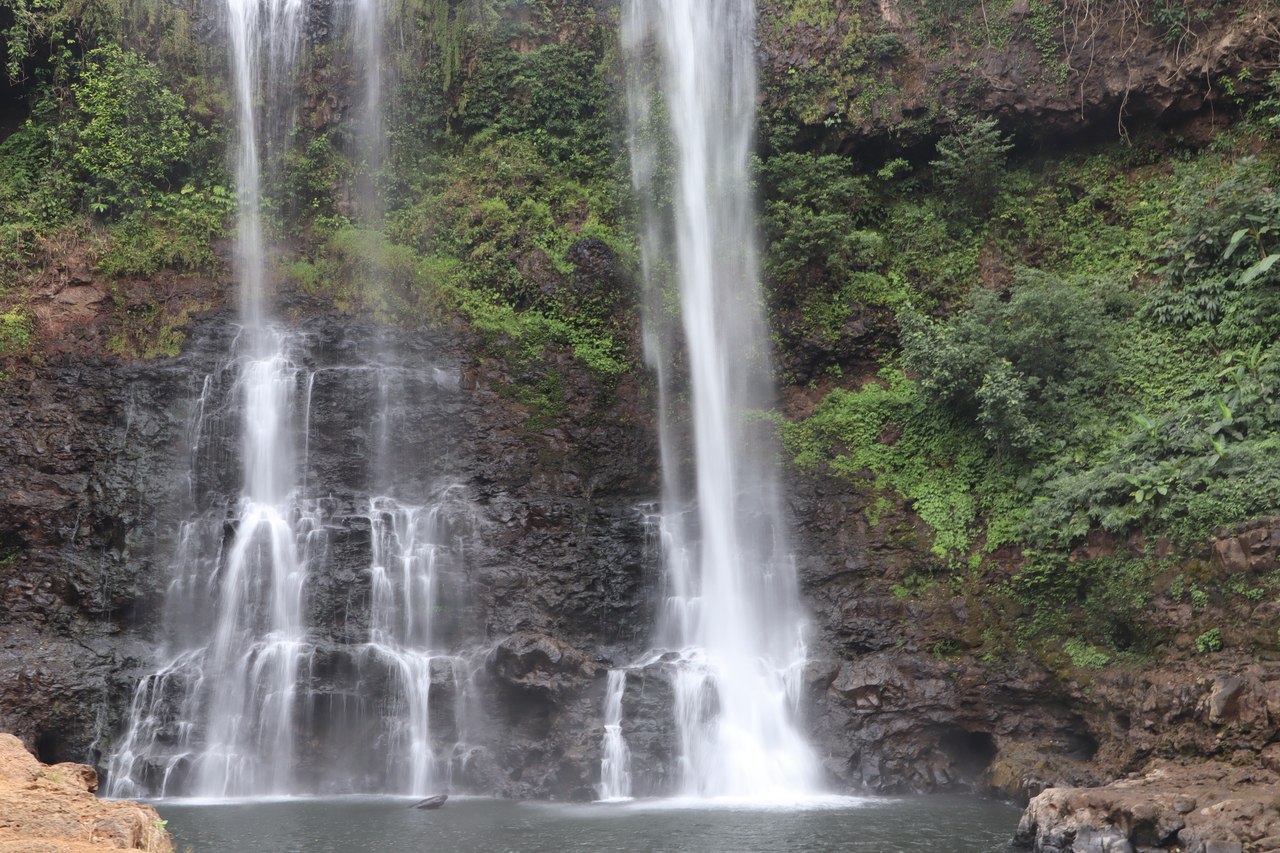
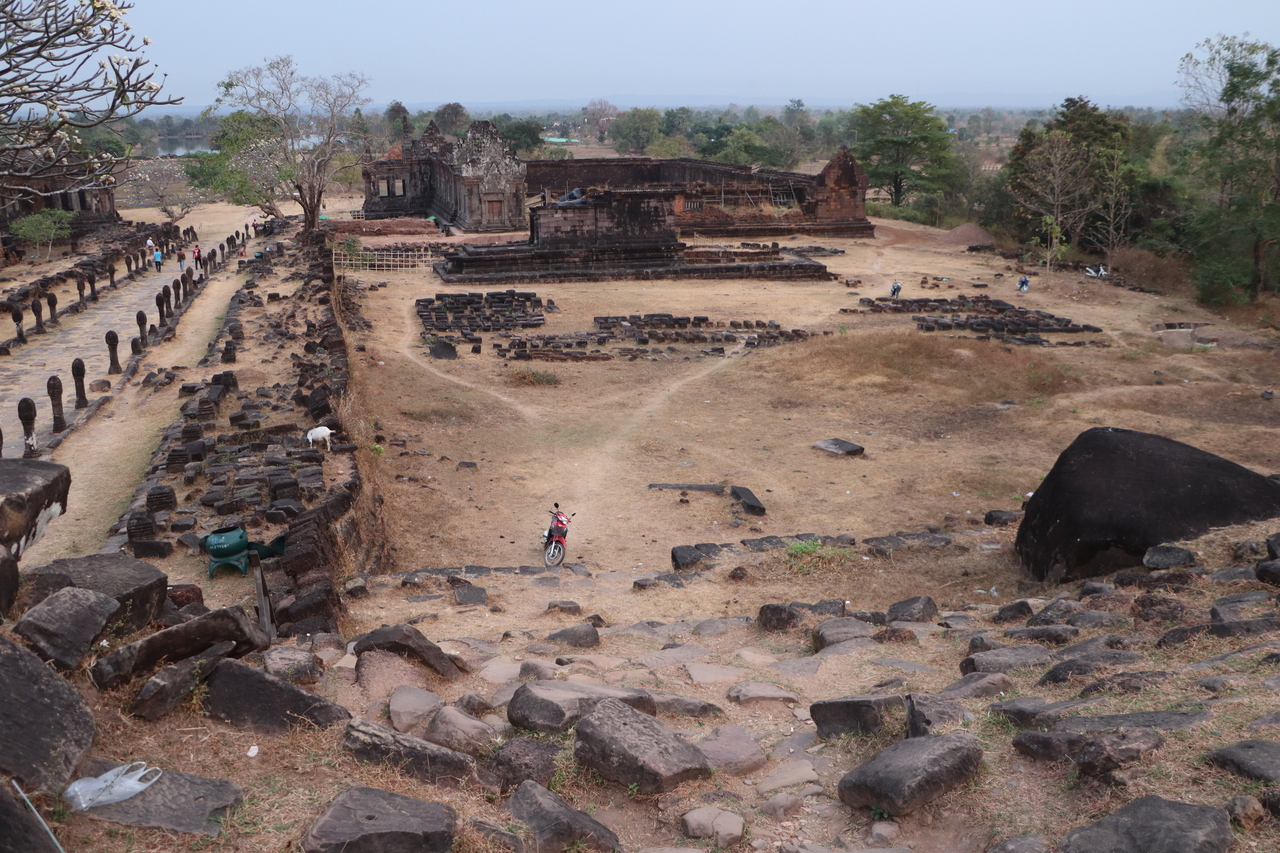
The ruins and the area of the temple had an Indiana Jones-like quality to them - reminiscent of the adventure and mystery depicted in the films.
(day 8, 9, 10)
4000 islands
After all the hustle and bustle, we couldn’t have been more excited to travel to a more tranquil place – 4000 islands (Si Phan Don). The islands are situated in the south of Laos where the Mekong River splits into several branches, creating a vast network of channels, rivers, and small islands.
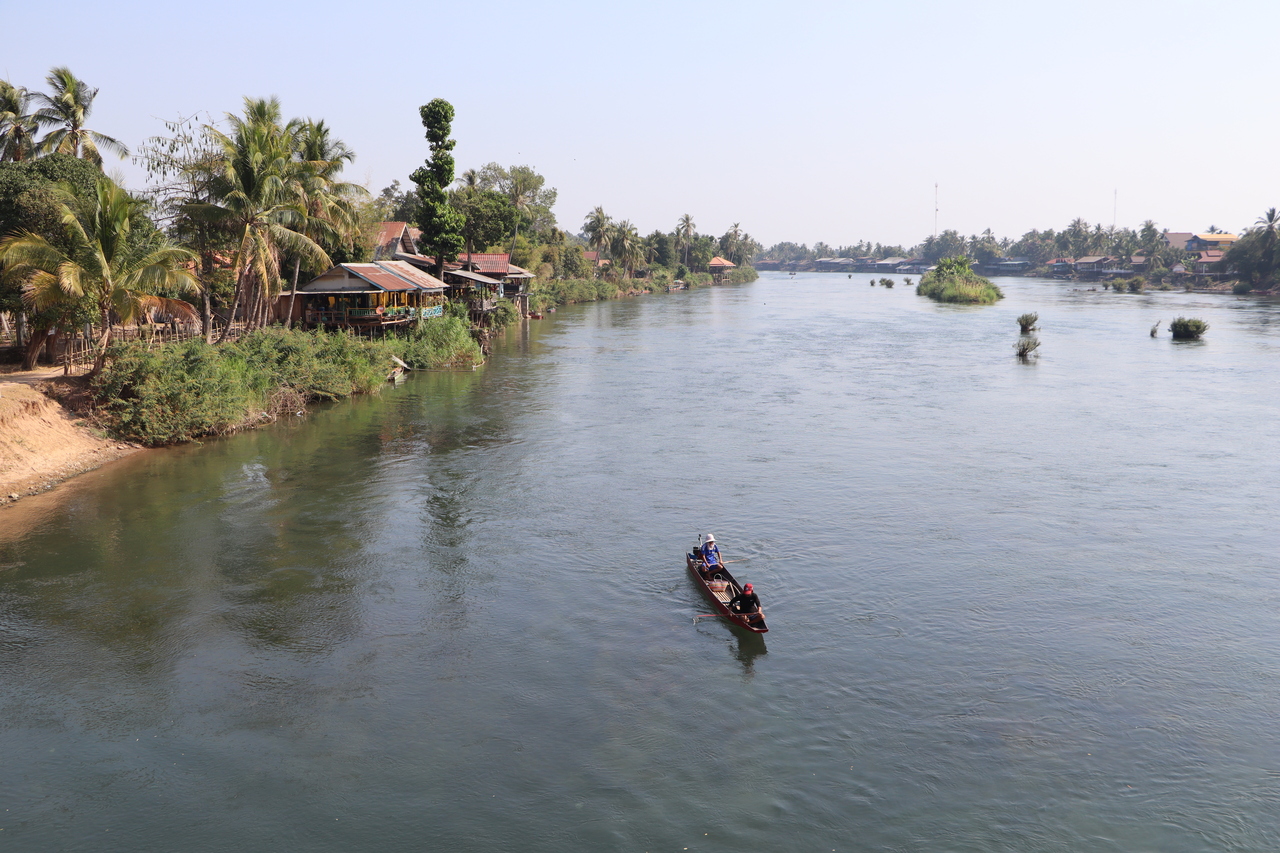
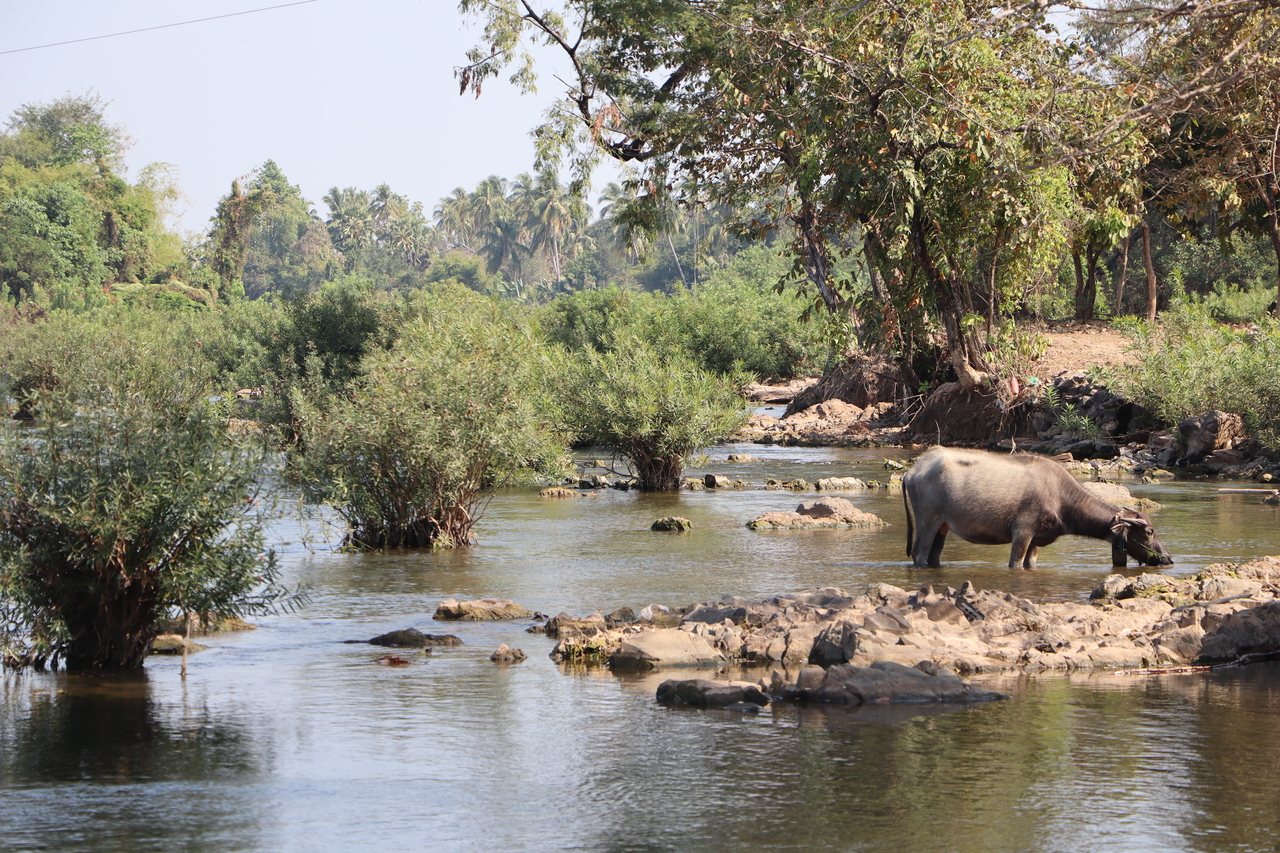
We spent two nights here, riding bicycles, sightseeing, and enjoying the tranquility and calmness of the place. It was an opportunity to unwind and recharge.
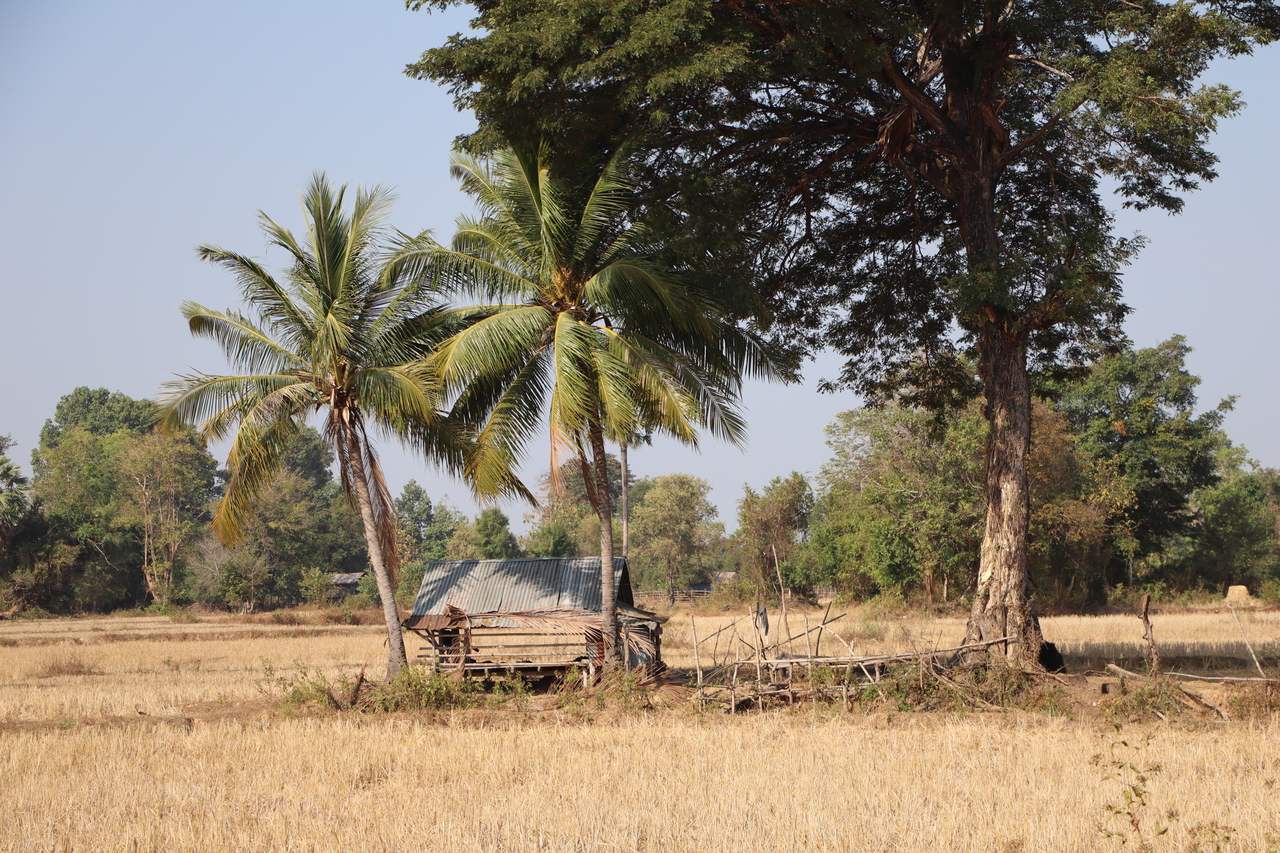
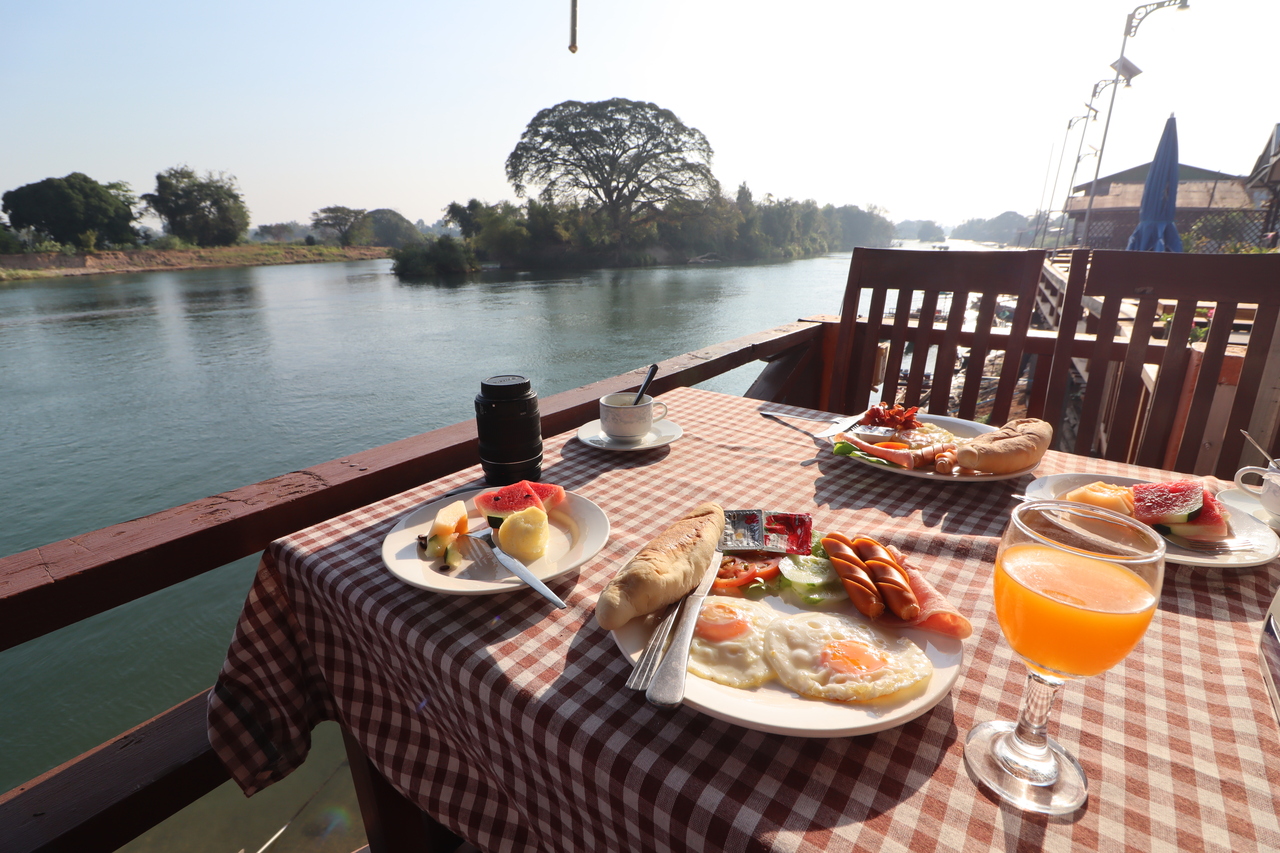
On our last day, I woke up early to catch a glimpse of the sun rising behind the hills. With our flight looming on the horizon, we sat quietly by the breakfast table watching the morning’s rays shimmer over the calm river, packed, and took a boat back to the city from where we took another bus to Cambodia.
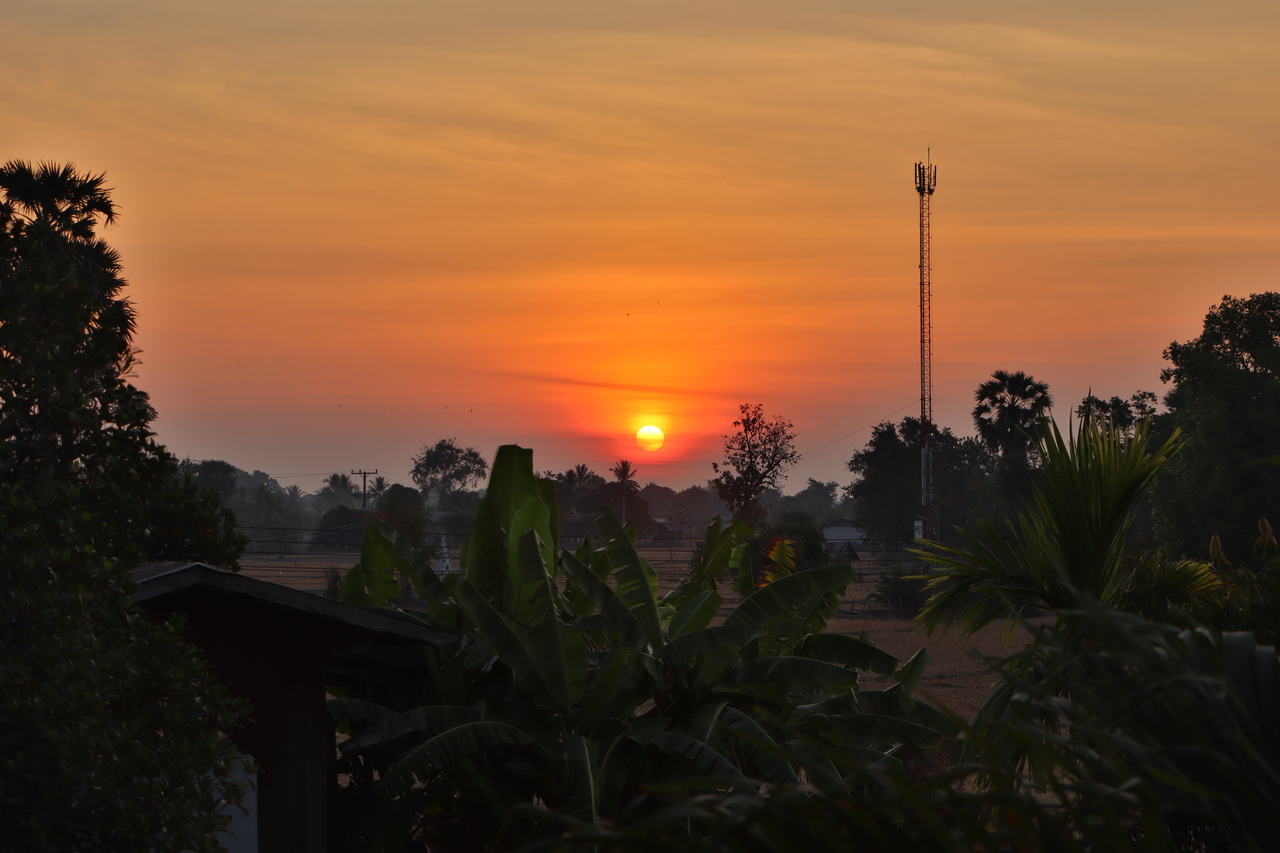
(day 11, 12)
To Cambodia and back to Singapore
When we took a bus to Cambodia, spending one night in Phnom Penh before returning back to Singapore, we already encountered some temperature checks and noticed people wearing masks at the airport, yet unaware of the unprecedented events that would unfold in the following days and months.
In summary, Laos offers a unique blend of culture, history, and natural beauty. Laos boasts a diverse and breathtaking landscape, with the Mekong River playing a central role in shaping both the natural beauty and traditional way of life. From majestic cascading waterfalls and towering mountain ranges to ancient temples and archeological sites, Laos offers a truly unforgettable experience. Whether it’s exploring the cultural heritage or immersing yourself in the natural splendor, Laos has something for everyone.